
Adolph De Meyer photograph, 1919
“I want to be a living work of art”
Luisa Casati
Today, 131 years ago, Marchesa Luisa Casati was born. I tried so many times to write something about La Casati, but it seemed to me always too difficult and the story so long that an entire book wouldn’t be enough. I probably came to know La Marchesa via some photos I found randomly, but the one which caught my attention the most is a photograph of her in Leon Bakst’s “Queen of the night” costume. So I started to search everything about this incredible woman and I discovered the books by S. D. Ryersson and M. O. Yaccarino “The Marchesa Casati. Potraits of a muse” and “Infinite Variety: the life and legend of the Marchesa Casati”. After some time I was lucky to find and read “Coré. Vita e dannazione della Marchesa Casati” by Dario Cecchi, the first book about the Marchesa and, probably, the most beautiful (here my collection of books) .
I came to be a kind of obsessed with this figure. She once wrote to d’Annunzio “words are vain” and, infact, despite some telegram, she never wrote anything and left very few assertions. Reading the books, she appears like a sphinx, silent, concerned only about her appearance, a tragic-comic character who loses everything in the name of Art. Paradoxically she was so worried to leave an immortal image of her through art, that almost nothing survived, except paintings and some photos. All her patrimony has been lost and dispersed, neither a museum about her exists nor an exhibition dedicated to her has ever been curated. Nowdays a lot of people think to be different or eccentric, but they appear colorful at least. Once, Luisa said to an American magazine “To be beautiful one must be unhurried. Personality is needed. There is too much sameness. The world seems to have only a desire for more of this sameness. To be different is to be alone. I do not like what is average. So I am alone.”
The title of the post is a phrase written by d’Annunzio to her that I found in the homonymous book (see sources at the end of the page) and it means “Endless whishes to the Nomad”. Here I tried to tell her story, showing pictures and paintings chronologically. Aware that this is just a few words comparing to her legend, it’s my little gift and homage for her birthday.
I wrote other posts regarding Marchesa Casati: the one about d’Annunzio’s Vittoriale, my visit to Villa San Michele in Capri, a critical comparison between her and Comtesse de Castiglione and I mentioned her in several posts that you can see here.
I’m also planning to do a post about Marchesa’s residences, one about Casati scandal in 1970 and one about Luisa descendants.
The idyllic childhood
Luisa was the second daughter of Count Alberto Amman and Lucia Bressi, married in 1879. Her father founded Italy’s most modernized and successful cotton mill in 1875, the Amman-Wepfer cotton factory. Luisa and her sister Francesca spent an idyllic childhood at the Villa Amalia, near Milan. Here the Ammans entertained frequently and extravagantly and Luisa delighted these parties. Luisa grew up in the midst of affluence, although a bit isolated in the huge Villa. Her mother dressed Parisian gowns by Doucet and Worth, which Luisa often used for play, and used to tell to her daughters stories of uncommon and extravagant personalities like Cristina Trivulzio, Comtesse de Castiglione, Sarah Bernhardt, Empress Elizabeth of Austria, King Ludwing II of Bavaria. During adolescence Luisa’s physical appearance became to be more noticeable: the big green eyes and the intensity of her gaze, her slender figure, her remarkable height became a reason of shyness and insecurity, comparing to her sister Francesca, who had more classical appearance.
The idyllic childhood ended with the sudden death of her mother in 1894. Two years later also her father died. Luisa was only 13 and her sister 14 when they became Italy’s single wealthiest heiresses. Maybe the loss of her parents contributed to her shyness and uneasiness, she also developed a interest in occultism and supernatural, starting collecting obscure objects like tarots and crystal balls. Since her parents death, Luisa and Francesca moved to Milan where they attended parties, concerts, operas and one day she met Camillo Casati.
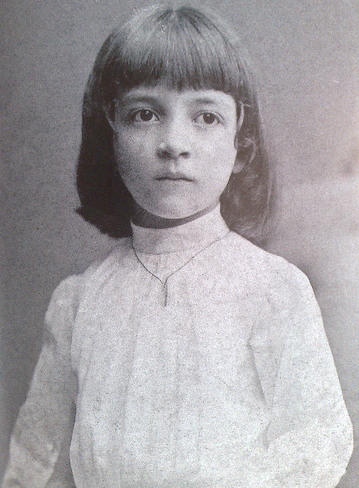
a little Luisa Amman, photographer unknown 1886
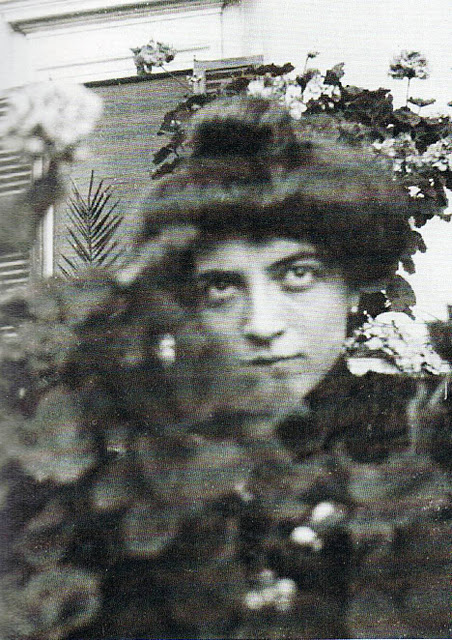
Luisa Amman, photographer unknown 1899
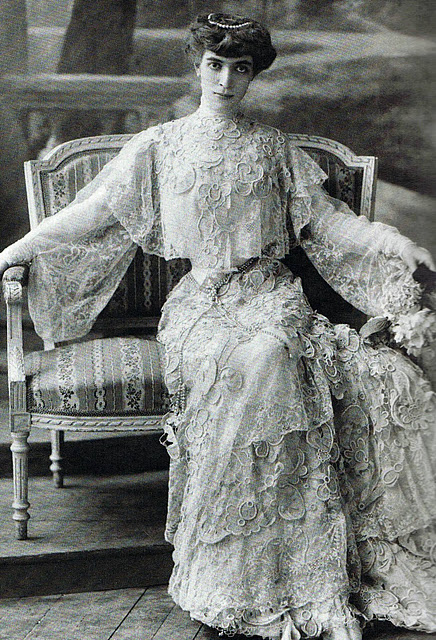
Luisa Casati, photographer unknown 1905

Luisa Casati, photographer unknown 1905
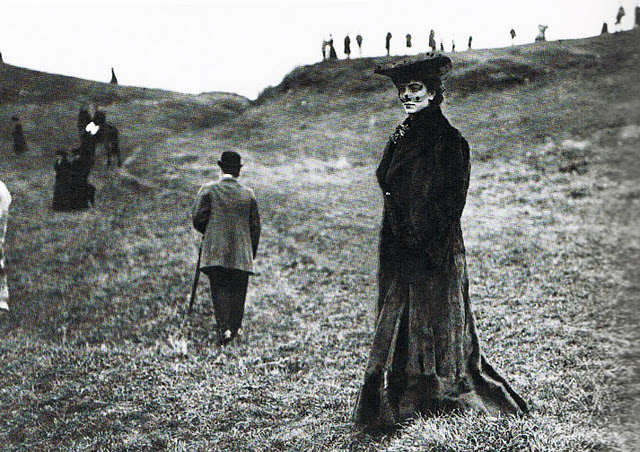
Luisa Casati at a foxhunt, photographer unknown 1903
Coré
The wedding between Camillo Casati Stampa di Soncino and Luisa took place in June 1900, she was 19. In this way she inherited the noble title of Marchesa. The couple spent the honeymoon in Paris, where Luisa joined the Exposition Universelle. Once in Italy, they went to live at the Villa Casati Stampa, an immense house in Cinisello Balsamo. It’s here that she started to experience her sense in decorating. Luisa also had a baby, in 1902, named Cristina in tribute to Cristina Trivulzio. The early life of the couple seemed happy and quite, Luisa and Camillo often enjoyed dinner parties, hunts and ridings and, during one of these, she met Gabriele d’Annunzio.
They started a relationship that will last a lifetime and which caused a transformation in Luisa. She started to wear only black dresses in Venetian lace, enhanced her slimness and height, she cut her hair and dyed in a auburn hue, emphasized her eyes with black kohl ring. Due to the relationship with d’Annunzio, she started to attend parties and events in Rome where she bought a house that she furnished in extravagantly and eccentric way. The affair with d’Annunzio was going on because, according to the Poet, unlike his other women, Luisa “possessed a gift, an omnipotent knowledge of the masculine heart: she knew how to be, or appear, incredible. She was, in fact, the only woman who ever astonish me.” D’Annunzio used to rename his women with mythical names and he called Luisa Kore, which in ancient greek means Persephone, but she changed in Coré. As well as the affair intensified, the lovers often spent some days in Venice. Here, d’Annunzio introduced Luisa to Alberto Martini and Giovanni Boldini. His portrait “The Marchesa Casati with a greyhound” 1908 was displayed in the Paris Salon of the following year. Everybody started to wonder who the fashionable noblewoman was.
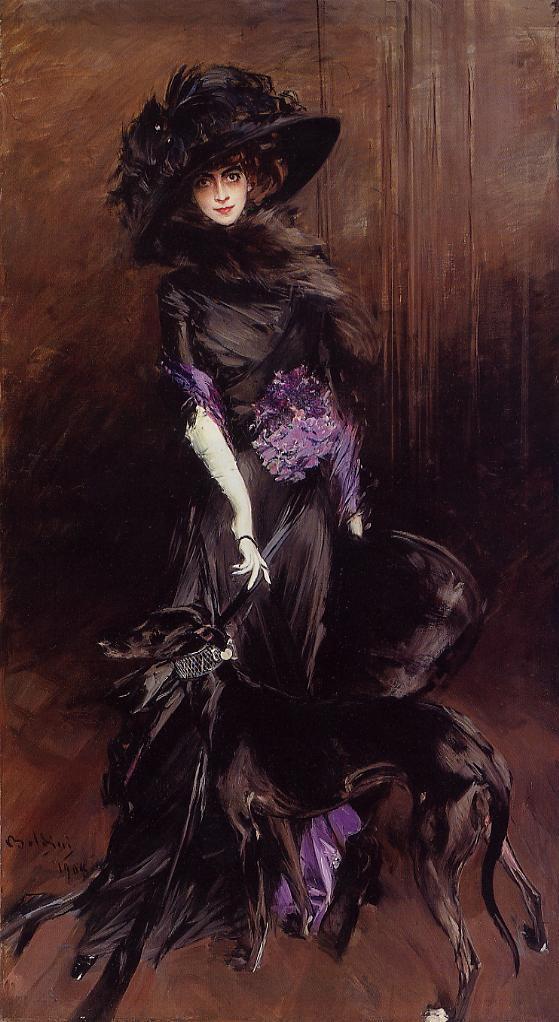
La Marchesa Luisa Casati with a greyhound, Giovanni Boldini 1908

Luisa Casati by Alberto Martini, ca. 1906

Luisa Casati as the Empress Theodora, Rome, photographer unknown 1905
The Venetian dream
Luisa had became now more self aware of her figure and comfortable with the company of artists she and d’Annunzio used to hang out with. Now she was completely independent from her husband and, in order to ensure longer stay in Venice, in 1910 she bought the Palazzo Venier dei Leoni, located in the Grand Canal. Luisa assembled a household stuff which included black manservants, trusted gondoliers with white gondolas (while the law required all gondolas to be black). She started to décor the Palazzo, trying to preserve the ruined aspect on the outside while inside she preferred to give a black, white and gold decoration, moving the marble floor from her house in Rome to Venice. Luisa gradually started to enclose herself by a menagerie of animals, she already had cats and dogs, especially greyhounds one black and one white, but later she also loved to be surrounded by exotic animals like parrots, monkeys, cheetahs and even snakes.
During the venetian years she started to built the reputation of La Casati: dressed in black damask, tiger and leopard skins, see-through metallic long dresses, she used to stroll naked in the moonlight of Piazza San Marco, dressed only with a fur cloak and pearls. Tired of the tight creations by Mariano Fortuny, which now were wore by many other noblewomen, she chose Leon Bakst to design her new wardrobe. Bakst was certainly more theatrical, as he was the costume designer of the Ballets Russes, but that’s what Luisa needed: to be theatrical, flamboyant, to be someone people look at. In Venice La Marchesa started to intensify relation with a lot of artists like Leon Bakst, Isadora Duncan, Diaghilev, Paul Poret, De Meyer (who also photographed her in one of the most famous portrait). She became known for her magnificent parties and masquerades, some surviving pictures shows us the Arlecchino Bianco costume, the outfit for a Persian-themed party or the Indo-Persane costume all designed by Bakst. The most monumental party was the Grande Ballo Pietro Longhi inspired by XVIII century and setted in Piazza San Marco.

Portrait from a porcelain miniature, artist unknown, ca. 1920
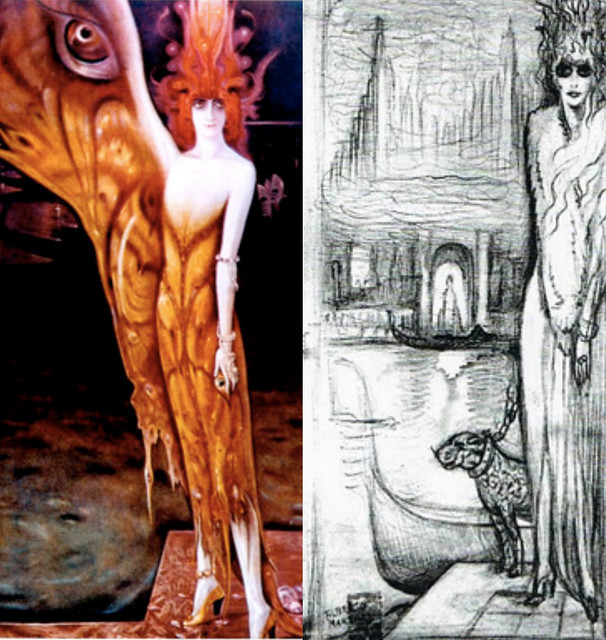
left: Un lent réveil après bien des metempsychoses by A. Martini, 1912
right: La Marquise Casati à Venise by A. Martini, ca. 1915
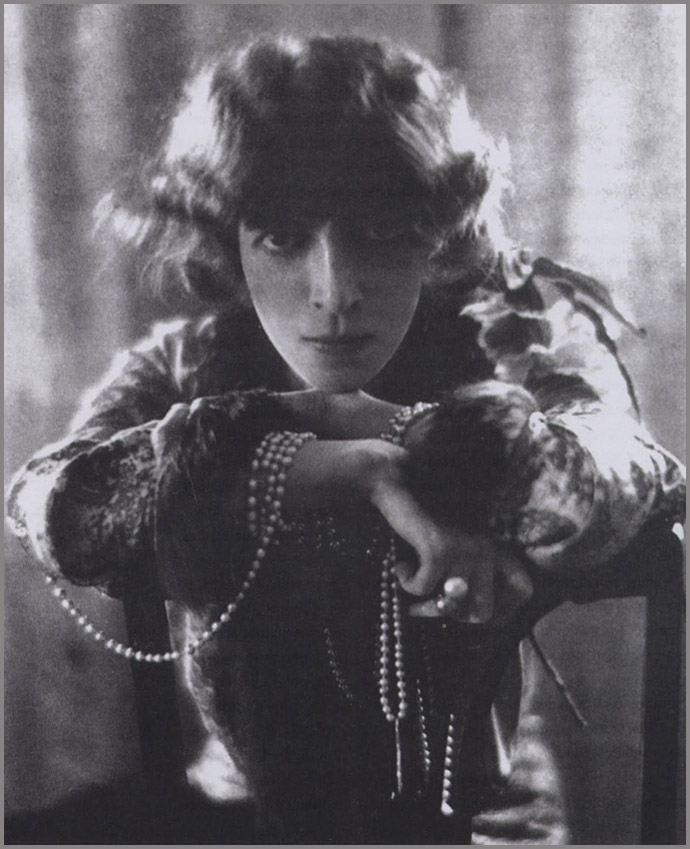
De Meyer photograph, Venice, 1912
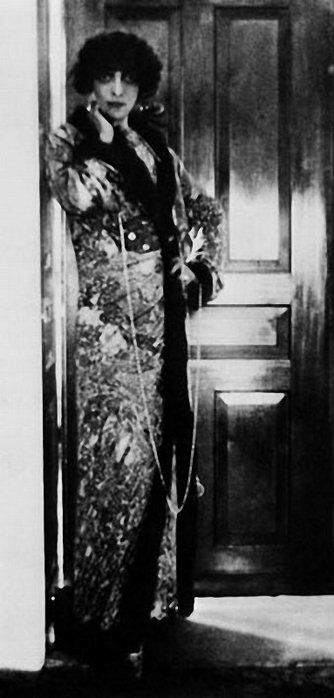
De Meyer photograph, Venice, 1912
 The Marchesa gifted one of her photographic portrait by De Meyer to d’Annunzio, who penned this instription upon it which means “Flesh is nothing but a spirit betrothed to death”.
The Marchesa gifted one of her photographic portrait by De Meyer to d’Annunzio, who penned this instription upon it which means “Flesh is nothing but a spirit betrothed to death”.

Luisa with her cheetah, Venice, photographer unknown ca. 1912

sketch of Luisa by Leon Bakst, 1913
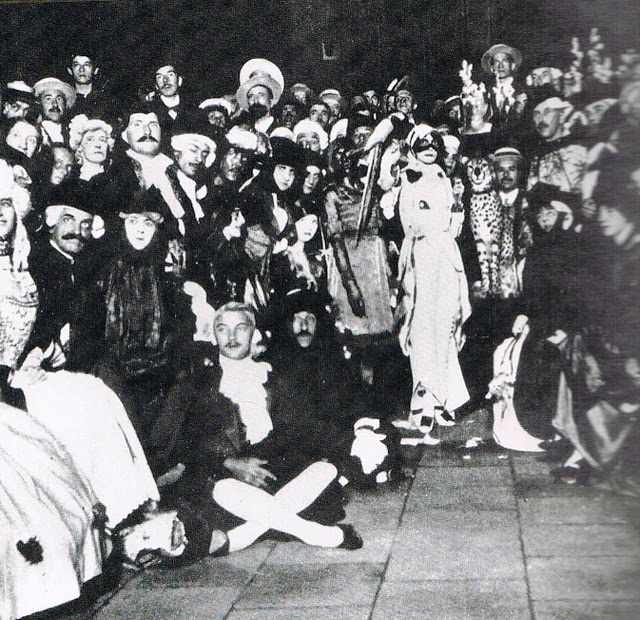
Luisa in Bakst’s Arlecchino Bianco costume at her masquerede, photographer unknown ca. 1913

Luisa wearing Arlecchino Bianco costume by Guiglio de Blaas, 1913
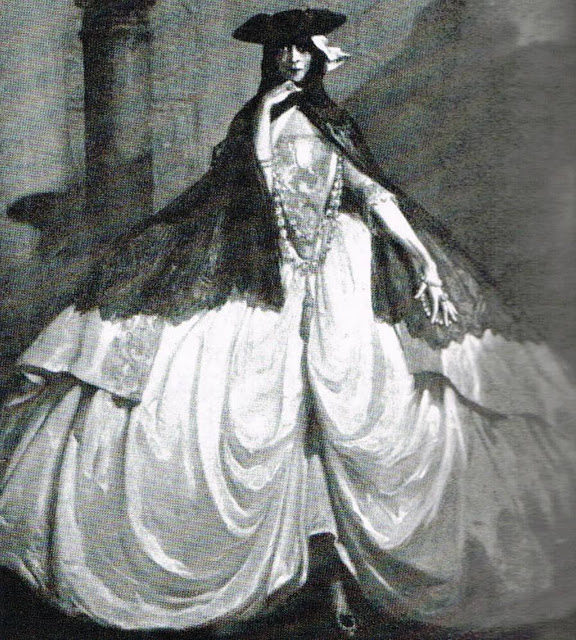
Luisa in her costume for the Grande Ballo Pietro Longhi by G. de Blaas, 1913
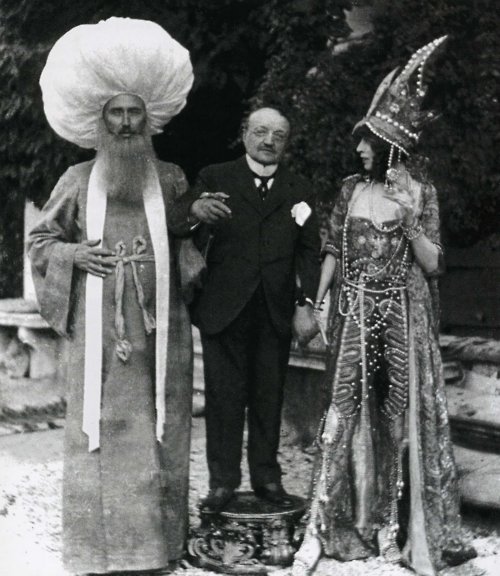
Paul-Cèsar Helleu, G. Boldini and L. Casati wearing the Indo-persane costume in the garden of Palazzo de Leoni, photograph by Mariano Fortuny, 1913

L. Casati wearing the Indo-persane costume, photographer unknown, 1913
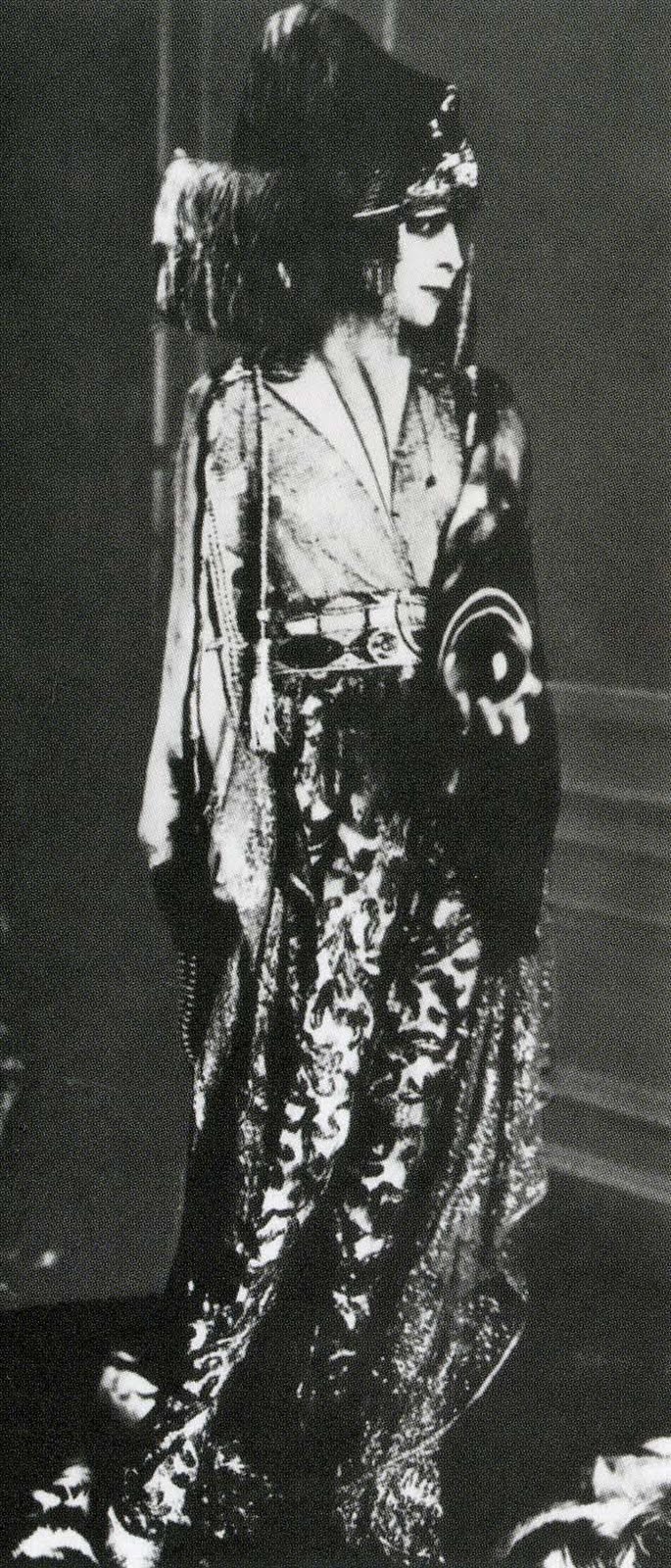
Luisa with crystall ball wearing a Poiret dress, photographer unknown, ca. 1913
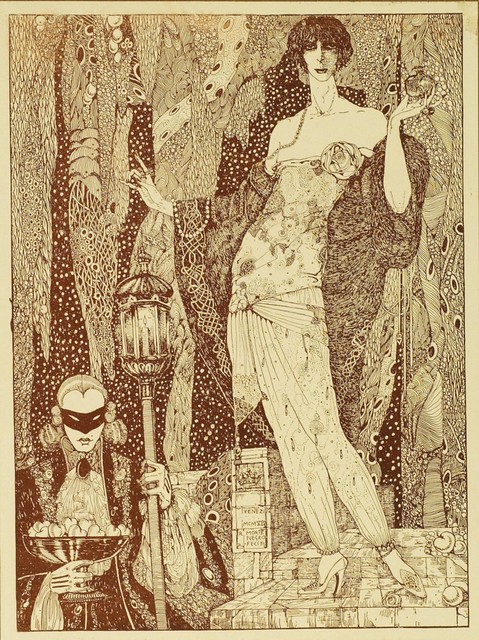
Luisa Casati by Roberto Montenegro, 1914
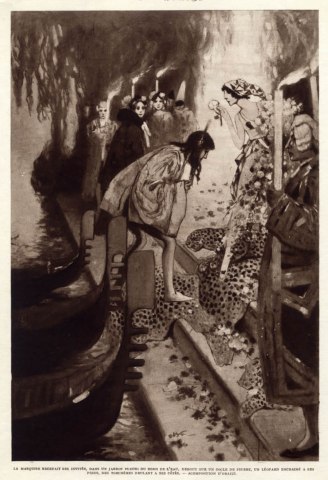
Luisa in Arlecchino Bianco costume greetings guests by Manuel Orazi, ca. 1913
“I want to be a living work of art”
From 1912-13 Luisa moved frequently between Venice, Rome and Paris where she was called “The Medusa of the Grand Hotels” because her staying in luxury hotels like The Ritz, Hotel du Rhin or the Princess Hotel which she used to furnish with animal skins, mechanical songbirds, feathers and other magical trinkets. D’Annunzio was in Paris too, in order to escape Italian creditors. Determinated to become a living work of art, Luisa promoted artists and let them immortalized her in artworks. In these years Boldini painted her second portrait “La Marchesa Luisa Casati with peacock feathers”. Can be dated to these years the Troubetzkoy sculpture, other Alberto Martini’s portraits, the Gustav Adolf Mossa’s drawing, the Natalia Goncharova’s painting, the Lotte Pritzel wax doll and the friendship with Alaister, who took inspiration from her for a lot of drawings. The Marchesa was able to charm even Futurists, whose aim was to denigrate the former symbolist and decadent art which Luisa embodied so perfectly.
“The Marchesa”, Martini said, “lived partly as a slave to her dreamworld. She was a great artist, but not understood by the common people or even her own friends, who were jealous spectators of her artistic successes.”
By the time she came to know Kees van Dongen, a fauvist painter who portrayed the Marchesa a lot of time and who also had an affair with. Dated back to these years are also the Jacob Epstein sculpture head, the Beltran-Masses portrait with the crystal ball and the two magnificent paintings by Augustus Jhon, whose friendship lasted until her death. During the first World War Luisa continued to roam European borders including Italy, France and also England, Poland, Russia while, in 1914, she divorced legally from Camillo.

La Marchesa Luisa Casati with peacock feathers, G. Boldini, 1914
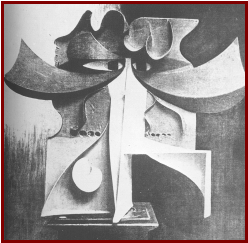
La Marchesa Casati con gli occhi di mica e il cuore di legno by Giacomo Balla, 1915


drawings of Luisa Casati by Alaister, ca. 1914
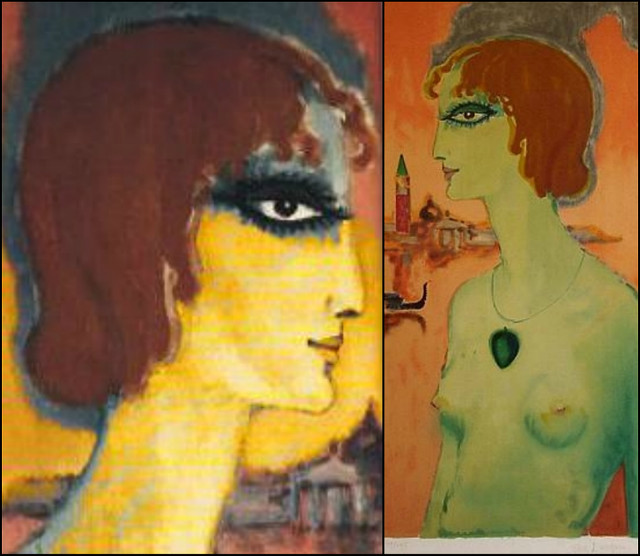
first portraits of Luisa by Kees van Dongen, ca. 1920-21
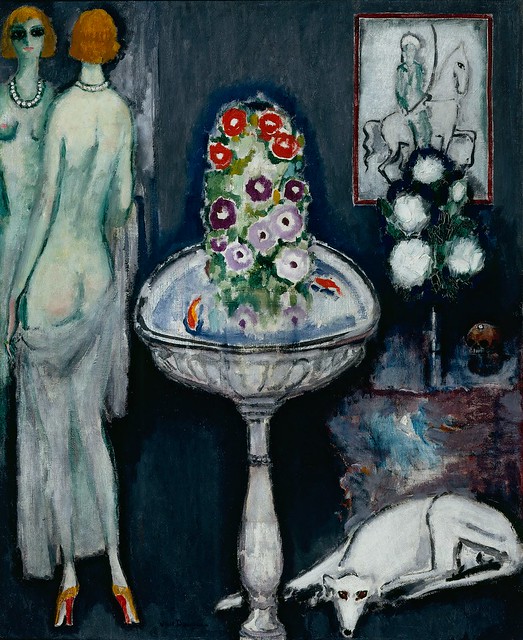
La vasque fleurie by Van Dongen, ca. 1917

The Quai, Venice by Van Dongen, ca. 1921
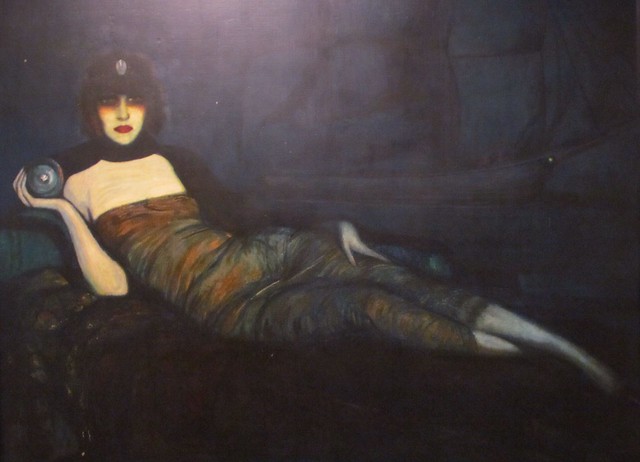
Luisa Casati by Federico Armando Beltran-Masses, 1920

sculpture of Luisa Casati by Jacob Epstein, 1918

The Marchesa Casati by Augustus John, 1919

The Marchesa Casati by Augustus John 1919
The Wanderer
In 1920, Luisa decided to settle for long period in Capri, an island located in the Bay of Naples and famous for being the shelter of artists and homosexuals. She chose to holyday in Villa San Michele, owned by Dr. Axel Munthe which she obviously furnished according to her tastes. Here she hosted D’Annunzio, Depero, Diaghilev and other members of the Ballets Russes and came to know Baron Jacques d’Adelsward-Fersen, who often invited her for an opium party in Villa Lysis, and Romaine Brooks, painter and former lover of D’Annunzio, who painted a creepy portrait of Luisa.
Tired of the stiffed atmosphere of Capri, she left. The wandering through Europe increased and her style became more bizarre. Paris turned to be her favorite place, here she could walk alonf Rue de La Paix dressed in a Vionnet dress of black velvet, tiger skin top hat and a pirate eye patch. Even if in the post-war era “eccentricity is the most démodé and unfashionable thing a woman can indulge” like de Meyer said, the undaunted Luisa emphasized her aesthetic trademarks like the eye-ringing kohl, the deep red lips and the white face make up. She became fond of wearing wigs, like the green one or the Medusa one, made with stuffed snakes. Once she costumed as Lady Macbeth, dressed completely in black and with a wax replica of bloodstained hand at her throat. She became a regular guest at the legendary balls given by Comte Etienne de Beaumont and his wife Edith. Due to her permanent stay in Paris she decided to buy a house and chose the former residence of Comte Robert de Montesquiou, her friend until his death in 1921. It was a beautiful palace in pink marble, located in the suburb of Le Vesinet and inspired by the Grand Trianon at Versailles and named the Palais Rose (not to be confused with the Boni de Castellane Palais Rose, also inspired by Grand Trianon).

Luisa Casati by Romaine Brooks, 1920

Luisa in a fountain costume designed by Poiret, 1920’s
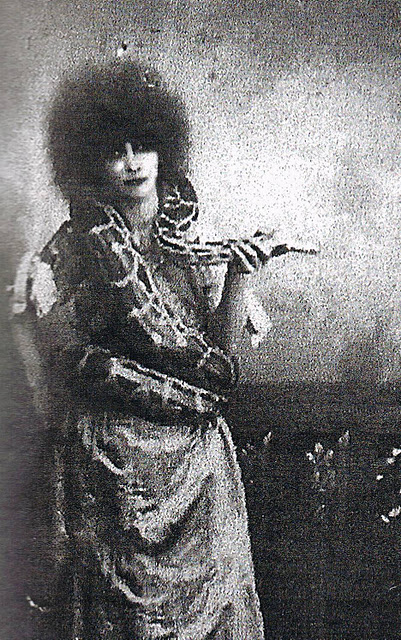
Luisa with her snake at a Beaumont ball, Paris, 1920’s

Luisa Casati, photographer unknown, 1920’s
Le Palais du Rêve
Luisa renamed the Palais Rose as Le Palais du Rêve. The ground included a pavilion which was converted into Marchesa’s private gallery and in the garden wes setted the former bathing pool of Madame de Montespan, now a fountain. Her menagerie was reduced to include only a cheetah, some parrots and a boa. Luisa began partying in the new house and continued to appear in the most exclusive parties in Paris like the 1922 Bal Véntien held at the Paris Opera. Leon Bakst once more design her costume, based upon the character “Queen of the night” from Mozart’s “The Magic Flute” and was realized by the house of Worth for 20000 francs. Another famous Ball was the Bal du Grand Prix in 1924, the costume she was going to wear had to be inspired by the Comtesse de Castiglione. She commissioned the costume to a young and Russian artist, Erté, who designed it an also appeared at the Ball as her attendant. Erté later said “The Marchesa was, in fact, a shy person. Her eccentric behavior was a cover for her shyness. I think this is true of many eccentric people. She was certainly the most extravagantly odd woman I have ever met.”
In these years can be dated the Zuloaga portrait and Man Ray’s photographs, author of the famous four-eyed photo which Luisa loved the most. Her affair with D’Annunzio continued, she often visited him at the Vittoriale, the Poet’s isolated and eccentric house since 1923 and until his death in 1938. Alberto Martini continued to represent the Marchesa in some of her weird costumes like the one resembling Cesare Borgia or the visionary Indian costume after the Marchesa American tour. Infact, Luisa celebrated the 1915 Christmas and New Year’s Eve in New York, but she found America a little disappointing. She also visited Florida, Los Angeles, where she attended a baseball game, and the Grand Canyon, wearing leopard-skin pants, an enormous sombrero and moccasin-shod feet painted purple.
Luisa was now forty and, although she was able to keep her international celebrity status, she couldn’t ignore the warnings of her accountants to curtail her immoderate spending. She was bound to sell all of her family properties like the cotton mill, the Roman and Milan houses and the Venice Palazzo. It was evident that she couldn’t afford anymore the same spending rhythm. Once in Paris, she decided to have a great masquerade ball in homage to Comnte de Cagliostro, but it ended with a catastrophic storm, lights gone out and guests frightened. Luisa found herself alone.

Luisa dressed in the Queen of the Night costume, photographer unknown, 1922
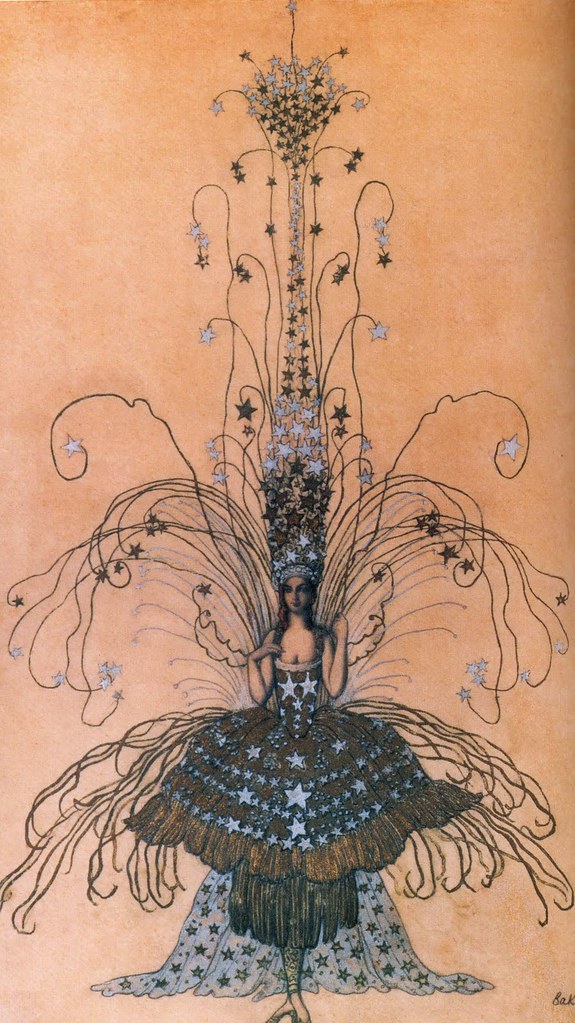
Leon Bakst drawing for the Queen of the night costume, 1922

Luisa dressed as the Comtesse de Castiglione by A. Martini, 1925

The Portrait by Erté, 1924
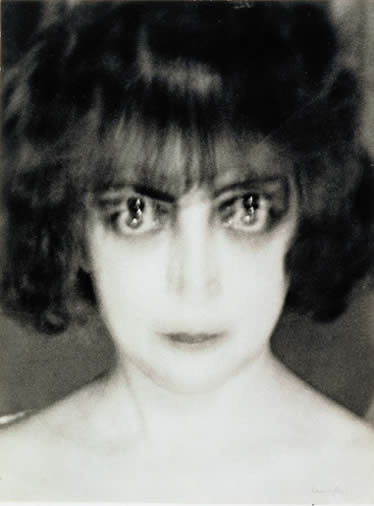
Man Ray famous photograph, 1922

Man Ray photograph, 1922
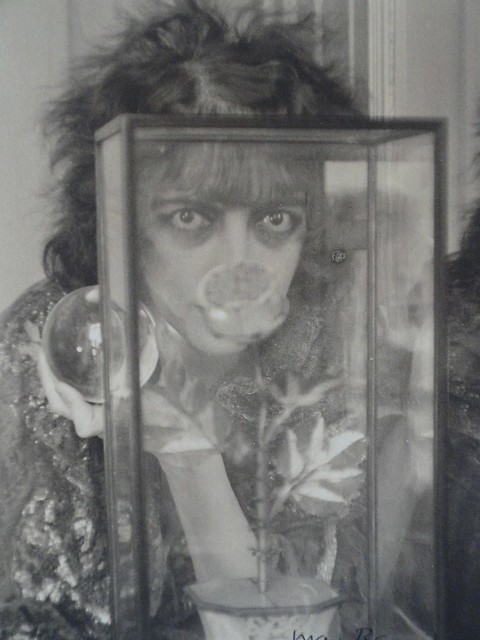
Man Ray photograph, 1922

The Marchesa Casati by Ignazio Zuloaga, 1923
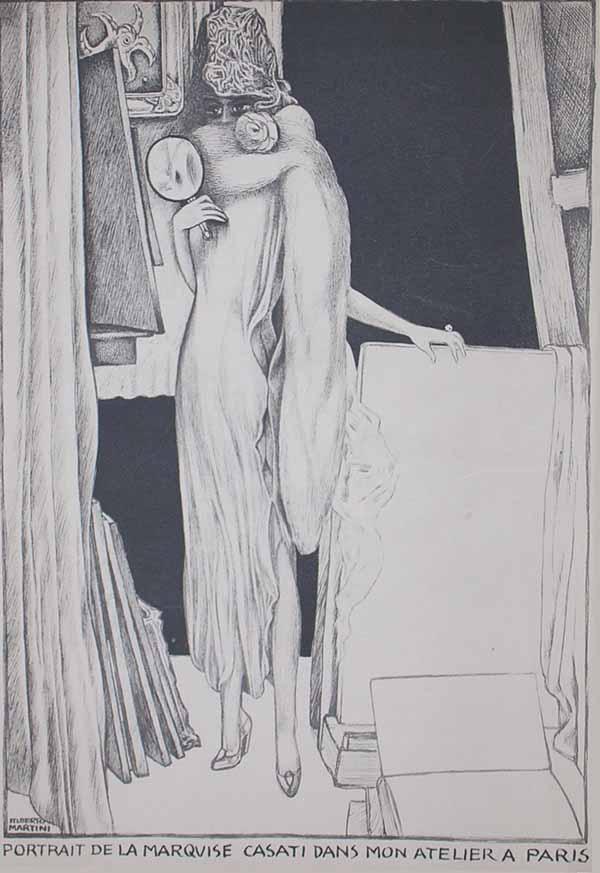
Portrait by A. Martini, 1925
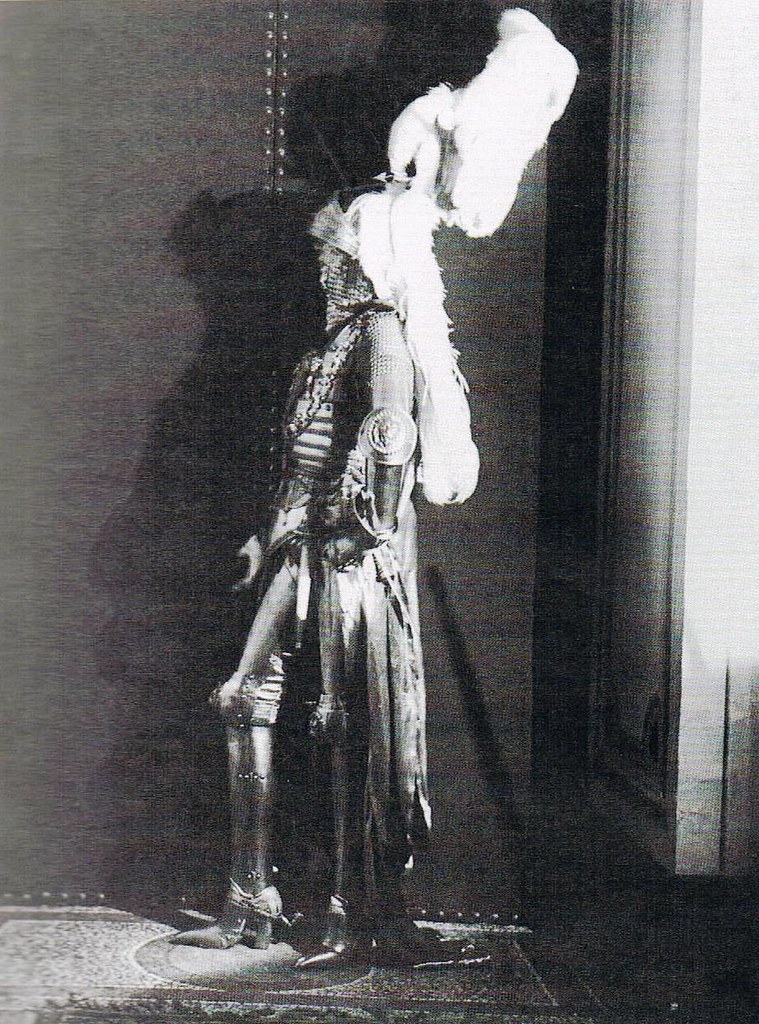
Luisa dressed as Cesare Borgia, photographer unknown, 1925
The end
Despite the warnings, Luisa seemed to be alien to her critical financial situation. In 1931 she celebrated her fiftieth birthday having a debt of 20000 US dollars. Sometimes she paid her small daily purchases with diamond bracelets or emerald brooches until the courts arranged for a public auction of the Palais Rose and its treasures. Luisa continued to live in Paris by renting apartments for short terms or accepting hospitality of old friends. She also accepted to attend some ball, like the De Beaumont’s annual masquerade where once she dressed like the Empress Elizabeth of Austria. But her situation got worse and so she left France and moved to London.
In London she could count upon her daughter Cristina, now Lady Hastings, and her granddaughter Moorea Black, Cristina’s daughter, along with other old friends like Augustus John. During the 40’s Luisa’s address changed about fifteen times. During the II world war she met the American artist Joseph Paget-Fredericks who created a lot of drawings inspired by her. Destitute, she kept to be concern about her appearance just like in the past, supplying dresses from some thrown away monkey fur and feathers from the Chelsea Palace Music Hall and using shoe polish as kohl, “She could create nobility out of poverty” said Cecil Beaton. In London she came to know british photographer Ceacil Beaton, Philippe Jullian, Quentin Crisp and other admirers. Luisa died in 1957, at the age of 76. She was laid out in her favorite black and leopard dress, with one of her stuffed Pekinese at her feet. Her granddaughter Moorea left a epitaph on her tombstone from Shakespeare’s tragedy Anthony and Cleopatra: “Age cannot wither her, nor custom stale her infinite variety.”
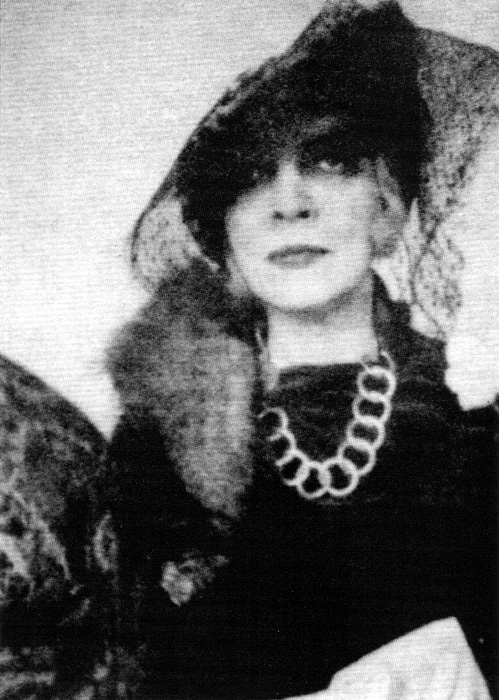
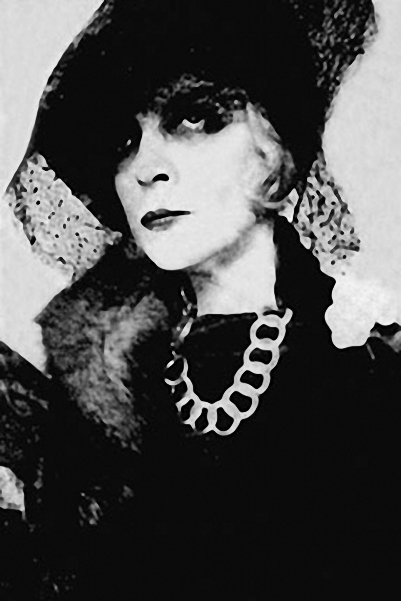
Photographs of Luisa by Carl L. T. Reitlinger, 1942
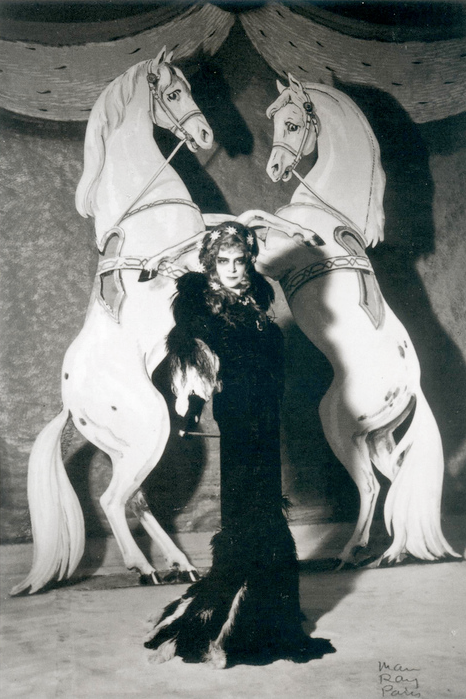
Luisa dresses as Empress Elisabeth of Austria by Man Ray, 1935
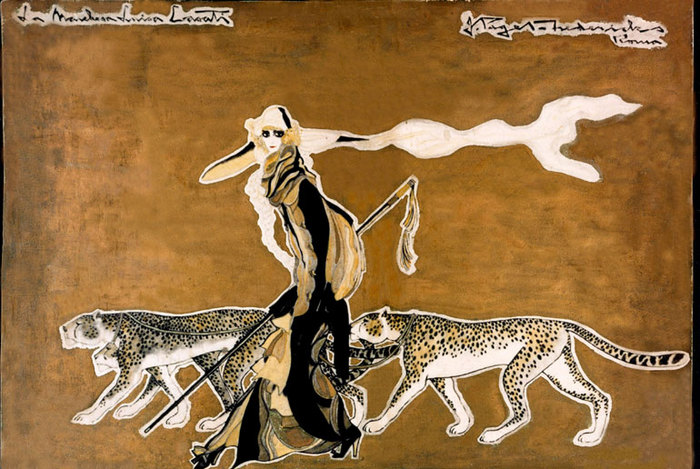
La Marchesa Luisa Casati by Joseph Paget-Fredericks, 1940’s

during the english days, Luisa began to create collages. They can be considered as the only artistic creation she ever made.
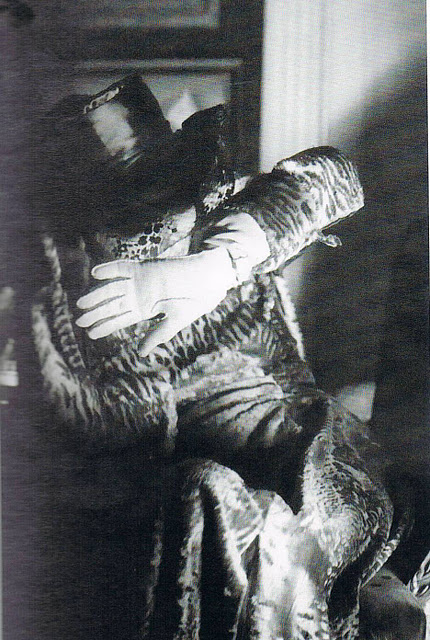
a candid photograph of Luisa Casati by Cecil Beaton, 1954
Sources: if you want to know more about La Casati, the books by Ryersson and Yaccarino are a must read! These are easily available on amazon and they are: “The Marchesa Casati. Potraits of a muse” it’s only in English and it’s more visual, it shows Marchesa old photographs, artworks and other rare images; “Infinite Variety: the life and legend of the Marchesa Casati” it’s available in English, Italian, French, German and Russian. It’s more analytic with a very detailed story and full of precious anecdotes. If you speak Italian you should also find interesting “Infiniti Auguri alla nomade” curated by Raffaella Castagnola, it’s the correspondence between the Marchesa and D’Annunzio. An essential must have for a Marchesa-lover is “Coré. Vita e dannazione della Marchesa Casati” by Dario Cecchi, which is out of print and very difficult to find. These are, until now, all the books that have been written about the Marchesa. There is another important contribution, an article written by Philippe Jullian “Extravagant Casati” for American Vogue, September issue 1970, which I’m still looking for. Thanks to C. A. S. for having helped me to find that article.
Images sources: tumblr, misspandora.fr, sweetflorencealice.blogspot.com

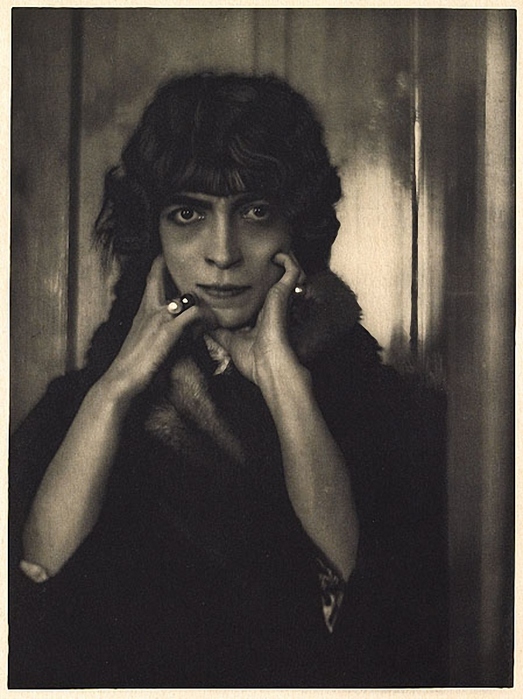
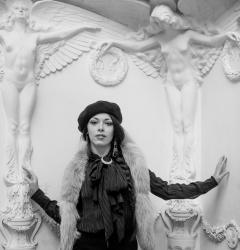
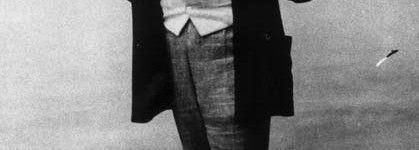

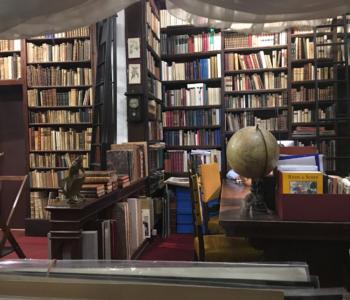
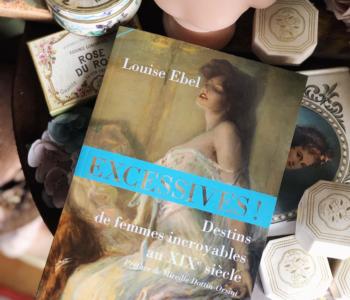
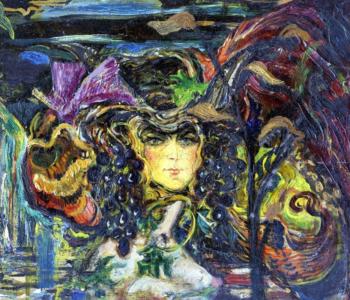
2 Commenti a “Infiniti auguri alla nomade: Luisa Casati.”
Ottimo articolo. La Cignitti sembra pure molto carina.
In effetti lo sono.
Trackbacks per le News